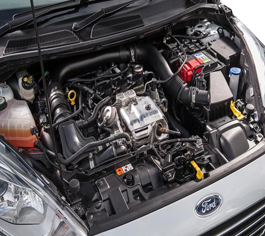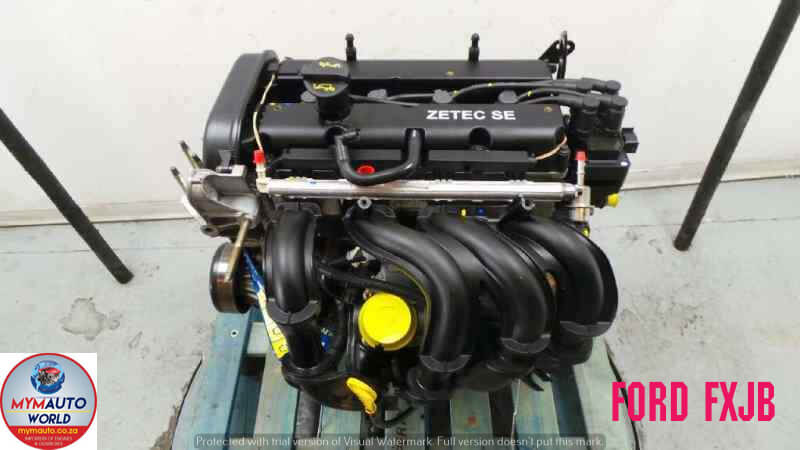What to Look for When Buying a Used Ford Fiesta Engine
What to Look for When Buying a Used Ford Fiesta Engine
Blog Article
Discovering the Advancement of Engines: From Timeless Designs to Modern Marvels
The evolution of engine technology stands for a considerable narrative in the background of innovation, noted by pivotal developments that have actually consistently redefined transportation and industry. From the first vapor engines that powered the Industrial Revolution to the emergence of internal combustion engines that transformed wheelchair, each stage has contributed to better effectiveness and ability. Currently, the transition to electric power symbolizes not just a technological change but additionally a broader dedication to ecological sustainability. As we analyze these turning points, one must think about how the future of engine design might unfold, testing our perceptions of power and efficiency.
The Birth of Engine Innovation
The introduction of engine technology marked an essential moment in human advancement, transforming power conversion and transportation. The earliest engines emerged from the requirement to harness mechanical power for useful usage, leading to the growth of devices that converted various energy types right into activity (ford fiesta engine).
The growth of the inner burning engine and the development of the vapor engine militarized an extensive change in industrial capacities. These engines not just boosted effectiveness however likewise expanded the range of human flexibility, allowing unprecedented transport opportunities. The very early models laid the foundation for the mechanized globe, promoting the rise of markets and reshaping societal frameworks.
As engine designs advanced, they progressed and integrated ingenious products design principles, leading the method for modern developments - ford fiesta engine. The birth of engine technology sparked a relentless pursuit of effectiveness and power, setting the stage for the dynamic advancement of transport and industrial equipment that would comply with
Heavy Steam Engines and Their Influence

The vapor engine's impact was particularly apparent in the transport field (ford fiesta engine). Steam-powered locomotives assisted in the quick activity of products and individuals across large ranges, effectively shrinking the geographical barriers that had previously impeded trade and communication. Likewise, steamships revolutionized maritime travel, enabling for quicker and extra reliable crossings of seas and rivers.
In sector, vapor engines powered factories, enabling mass production and the rise of metropolitan centers as centers of economic task. Heavy steam innovation fostered technologies in engineering and manufacturing procedures, laying the foundation for future improvements in engine style.
The Rise of Inner Burning
Often outweighing vapor power, the increase of inner burning engines noted a transformative change in transport and industry throughout the late 19th and early 20th centuries. The growth of these engines, defined by their capacity to melt fuel within the engine itself, enabled higher effectiveness and power contrasted to standard vapor engines. Pioneering innovators such as Nikolaus Otto and Rudolf Diesel played crucial duties in developing engine designs, bring about prevalent adoption in cars, watercrafts, and industrial machinery.
The inner burning engine's compact dimension and relatively light-weight nature assisted in the emergence of individual automobiles, transforming private wheelchair and reshaping urban landscapes. By making it possible for faster travel and the reliable transport of items, these engines militarized financial development and cultivated globalization. The flexibility of fuel choices, consisting of gasoline and diesel, even more boosted their allure, permitting diverse applications throughout different markets.
In spite of the ecological worries that would certainly later arise, the first attraction of internal burning modern technology stocked its transformative possibility. As culture accepted this development, the structure was laid for modern-day transportation systems, developing inner combustion engines as a cornerstone of industrial innovation and day-to-day life throughout the 20th century.
Developments in Engine Effectiveness
As internal burning engines became important to transport and industry, the focus moved in the direction of improving their performance to satisfy expanding needs for efficiency and sustainability. Innovations in engine layout, material scientific research, find out and technology have substantially added to this evolution.
One significant improvement is the advancement of turbocharging, which enables increased air intake, resulting in more complete fuel burning and enhanced power outcome without enlarging engine size. In addition, variable valve timing systems have actually been implemented to enhance engine performance across various RPM ranges, thus improving fuel effectiveness.
The use of innovative fuel injection innovations, such as direct injection, has actually likewise played a critical duty. This approach enables even more accurate control over the fuel-air blend, promoting better burning and reducing emissions. Lightweight materials, consisting of light weight aluminum and composite elements, have actually been taken on to minimize general engine weight, leading to improved efficiency.
These improvements reflect a more comprehensive fad within the vehicle sector, where the harmony between engineering innovation and ecological considerations drives the recurring pursuit for greater effectiveness in inner burning engines. As a result, modern engines are currently more effective, cleaner, and efficient than ever before, leading the way for an extra sustainable future in transportation.
The Change to Electric Power
With growing problems over ecological influence and nonrenewable fuel source dependence, the auto industry is experiencing a considerable change in the direction of electric power. This transition is driven by a mix of technical developments, regulative pressures, and transforming customer preferences. Electric lorries (EVs) use an engaging alternative to typical interior combustion engines, boasting decreased greenhouse gas discharges and i loved this lower operating expense.
The surge of battery modern technology has actually been a game changer, with lithium-ion batteries ending up being a lot more economical and reliable. Boosted power density and faster charging capabilities have made EVs a lot more sensible for day-to-day use. Additionally, federal governments worldwide are carrying out motivations and establishing ambitious targets for phasing out fossil gas cars, consequently accelerating the adoption of electric power.
Major automakers are spending heavily in research study and growth, resulting in the introduction of a diverse range of electric designs. This consists of not only auto however also industrial lorries and public transport solutions. As charging facilities expands and battery innovation remains to improve, the shift to electrical power is positioned to improve the automobile landscape, promoting sustainability and advancement in the years ahead. The future of transport is electric, and the energy is indisputable.
Final Thought
The evolution of engine innovation represents a considerable trajectory of advancement that has profoundly influenced transport and market. From the fundamental vapor engines to the transformative internal combustion engines, each growth has actually added to improved wheelchair and financial growth. The present change towards electrical power emphasizes a critical dedication to sustainability, driven by developments in battery modern technology. This ongoing evolution not just shows altering social requirements yet additionally highlights the potential for a cleaner and much more effective future in engine design.

Report this page